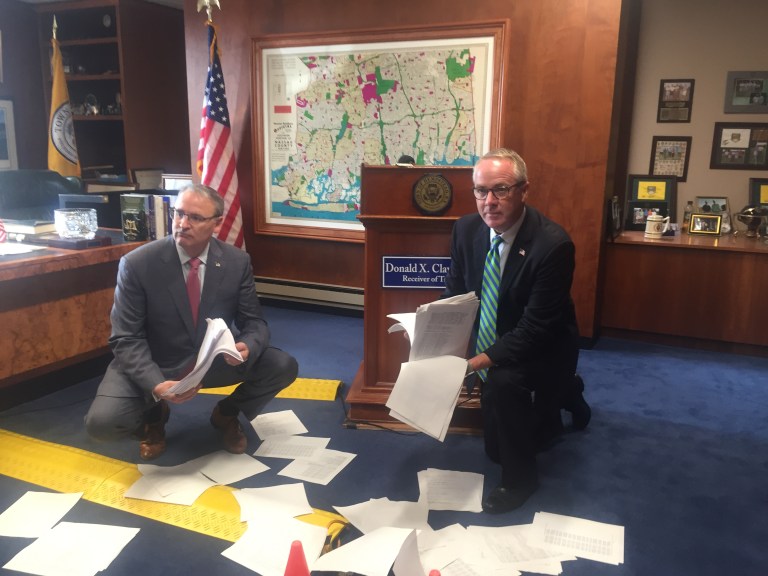
After months of fighting to disclose the “secret mathematical formula” behind Nassau County’s reassessment of how much homeowners owe in taxes, the Town of Hempstead receiver of taxes finally has access to the documents.
He has a new question, however. How does a person read the formula?
Donald Clavin, the town’s receiver of taxes, is not happy with the release of documents showcasing the mathematical formula behind the reassessment of property taxes on Long Island. He believes it is “not in spirit of true disclosure.” He stressed that these documents can only be interpreted by a person with a “doctorate degree in computer statistics and programming.” The algorithm is available for the public to read, but with no explanation as to what it means.
“It took a taxpayer’s lawsuit following his numerous Freedom of Information requests, appeals, and public announcements for the county’s administration to finally release what appears to be the formula to its much-maligned reassessment project,” Clavin said in a statement.
The Island Now reported that in 2018, Nassau County Executive Laura Curren called for a reassessment of all homes and what the owners are paying in taxes in Nassau County. The move led to lawsuits and complaints about a lack of transparency. It had been completed in less than six months when the 2003 reassessment took three years to complete. This was due to the fact that the latest reassessment was the first to utilize computer or estimation modeling as the primary basis to calculate residential market values.
The county executive’s office had shared studies at the time of the reassessment that said that 55 percent of Nassau County homeowners would see a decrease in their property taxes due to the reassessment, exemptions and a five-year phase-in plan.
Another major criticism of the reassessment was the lack of access to the computer algorithm used to develop property tax values.
The reassessment was a major source of anger for Lynbrook homeowner Dennis Duffy, who went on a crusade for months to get access to the “secret formula.” Duffy’s initial FOIL request for the documents was denied, citing the formula as “inter-agency or intra-agency materials.” After Duffy appealed the denial, the formula was then cited as a trade secret.
Duffy then met Clavin at one of Clavin’s taxpayer seminars and inspired Clavin to call on the county to honor the Freedom of Information act. This public call was not answered by the county but was answered by the state’s Committee on Open Government. In a letter, the committee said Nassau County “should not be permitted to claim trade secret status over the algorithm” because it calculates residential property values.
After six months, the assessor finally released the “algorithm used in the Nassau County Reassessment.” Clavin is not happy with how difficult it is to understand.
Duffy was not able to make Clavin’s press conference last Tuesday along with County Legislator Bill Gaylor bwhere they commended Duffy’s work to get access to the formula. Clavin declared it a “partial victory” because now his fight is to have the documents simplified for all homeowners “who deserves clear answers.”
Clavin and Gaylor urged the County Executive Curran to come forward or have a representative explain exactly how this formula works and how it calculates how much a homeowners taxes will be. Clavin, unhappy with the inability to understand the formula, threw the 239-page document to the ground as Gaylor declared “the challenge is on,” for Curran’s office to explain the formula as he slammed a $1 bill on the podium.







The software is written in the language of a statistical analysis package called SPSS, which is owned by IBM (see https://en.wikipedia.org/wiki/SPSS). I do not know the language myself but I can certainly read and get a basic understanding of what is going on. The language dates back to 1968 so is not that complicated compared to modern languages that have a lot more functionality. BTW, I only have a BS degree in Computer Science with 30 years experience. No doctorate as the Receiver of Taxes suggests.